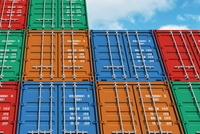
Lead Image © Oleksiy Mark, 123RF.com
Application virtualization with Docker
Order in the System
Applications are no longer only developed and run on local machines. In the cloud era, this also takes place in virtual cloud environments. Such platform as a service (PaaS) environments offer many benefits. Scalability, high availability, consolidation, multitenancy, and portability are just a few requirements that can now be implemented even more easily in a cloud than on conventional bare metal systems.
However, classic virtual machines, regardless of the hypervisor used, no longer meet the above requirements. They have simply become too inflexible and are too much of a burden. Developers do not want to mess around with first installing an operating system, then configuring it, and then satisfying all the dependencies that are required to develop and operate an application.
Containers Celebrate a Comeback
Container technology has existed for a long time – just think of Solaris Zones, BSD Jails, or Parallels Virtuozzo; however, it has moved back into the spotlight in the past two years and is now rapidly gaining popularity. Containers keep a computer's resources isolated (e.g., memory, CPU, network and block storage).
Applications run inside a container completely independent of one another, and each has its own view on the existing processes, filesystem, or network. Only the host system's kernel is shared between the individual containers, because most features in such an environment are provided by a variety of functions in the kernel. Because virtualization only takes place at the operating system level and no emulation of the hardware or a virtual machine is necessary, the container is available immediately, and it is not necessary to run through the BIOS or perform system initialization (Figures 1 and 2).
...Buy this article as PDF
(incl. VAT)
Buy ADMIN Magazine
Subscribe to our ADMIN Newsletters
Subscribe to our Linux Newsletters
Find Linux and Open Source Jobs
Most Popular
Support Our Work
ADMIN content is made possible with support from readers like you. Please consider contributing when you've found an article to be beneficial.







